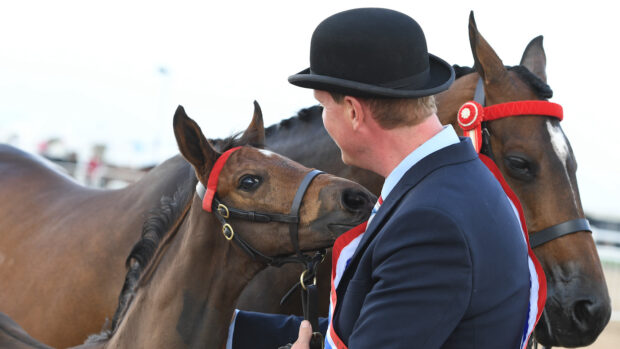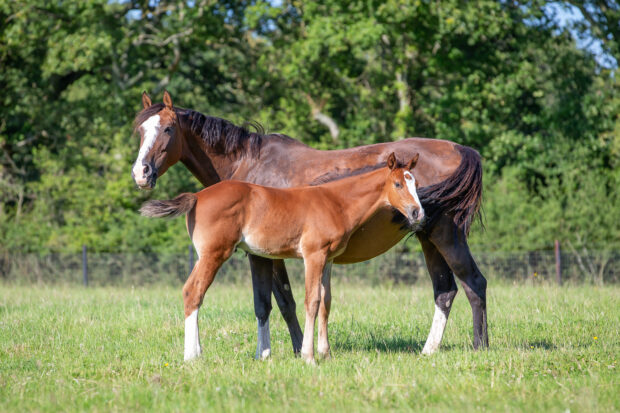More articles on broodmares
Find a stallion or stud
Breeders should plan well ahead of the breeding season to put a mare in-foal. This allows a suitable stallion to be selected and the mare to be prepared.
Although some mares experience a heat (oestrous) cycle all year round, most have a rest phase during the winter and early spring. Their breeding cycle begins naturally some time in spring. Once the mare is truly in the breeding season, her oestrous cycles last 22 days, on average. This tends to be slightly longer in the spring.
Daylight has the most important influence on a mare’s reproductive performance. The production of the hormones that “switch on” the mare to cycle is controlled by the amount of daylight. This results in foals born in the spring and early summer, when environmental conditions should be optimal for foal survival. Therefore, the natural breeding season of the horse in the northern hemisphere is from May until August. This is the time when highest pregnancy rates are likely to occur.
But man has his own ideas of when mares should foal. Consequently, breeders attempt to cover mares in the winter and early spring. This means manipulating the mare’s breeding cycle so that she comes properly into season earlier than nature intended.
Artificial lighting
Experience has shown that 16hr of light stimulus (artificial and natural) is adequate to make a mare cycle earlier. This means providing light from 7am until 11pm. The artificial light is best added at the end of the natural daylight period.
The light in the stable must be bright enough. This means a 150-watt clear bulb in the middle of a 4x4m box. If a strip light is used this should be 1.3m (40 watt). Care should be taken to eliminate shadows because they can prevent a good response.
Also extra lighting must begin early enough. Generally, a minimum of 8-10 weeks is needed.
Mares should be in good body condition when they begin to have extra lighting. A mare should be in a rising plane of nutrition at the start of the breeding season and have ribs that can be felt, but not seen. The neck should be reasonably well covered and the withers rounded. There should be fat around the tail head and no hollowness through the quarters. Research has shown that only a moderate level of body fat is necessary for adequate reproductive performance, so mares should not be fat.
Hormones
Several hormones can be given to induce ovulatory heats early in the breeding season in barren and maiden mares. This helps ensure foals are born early and reduces pressure on the stallion because foaling mares are ready to be bred.
Progesterone/progestagen withdrawal therapy has been used successfully in mares coming to the end of a two-month artificial light programme. Progesterone can be administered for 10-15 days orally as the synthetic progestagen altrenogest (equine Regumate).
Hormone implants (Ovuplant) have been recently licensed in the UK, but only around 50% of mares will respond and several implants may be needed.
Twice daily injections of another synthetic hormone (Receptal) may induce ovulation in mares that have not started their cycle, but results are much better when used in mares during their first spring cycle.
Other factors
It is often felt that the presence of a stallion can encourage a mare to cycle. Although there is no good scientific evidence of this, if all else fails, it may be worth trying. A good flush of fresh grass is undoubtedly helpful in stimulating early cycling.
This veterinary feature was first published in full in Horse & Hound (15 December, ’05)
Looking for more articles on broodmares?
Find a stallion or stud near you
SUBSCRIBE TO HORSE & HOUND AND SAVE Enjoy all the latest equestrian news and competition reports delivered straight to your door every week. To subscribe for just £1.43 a copy click here >>
|



